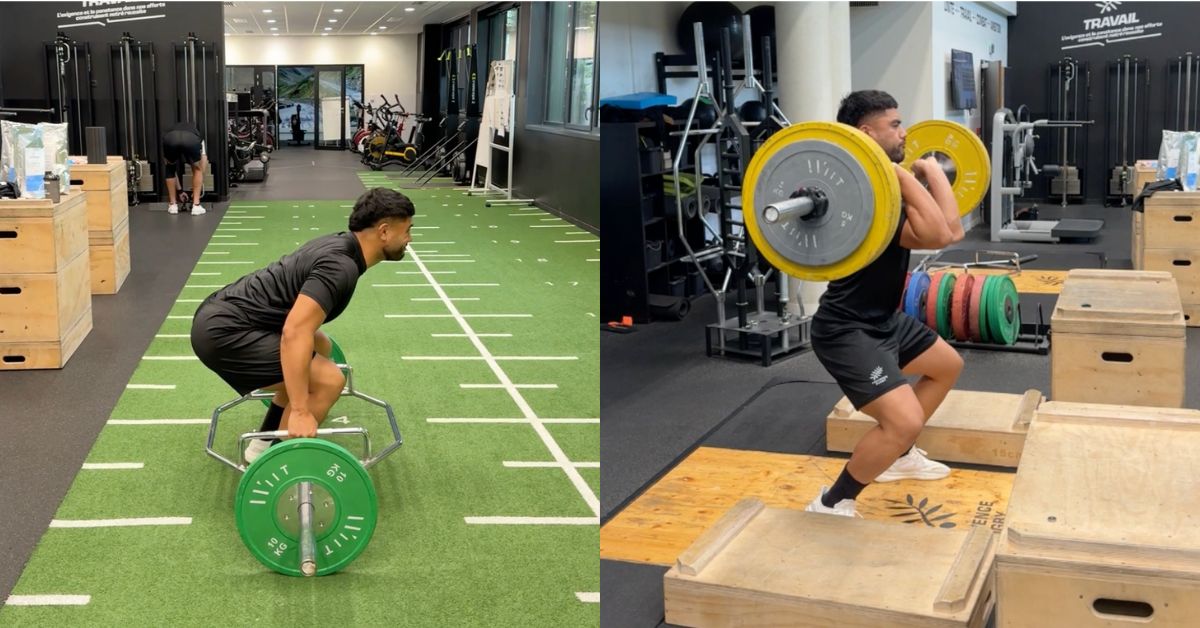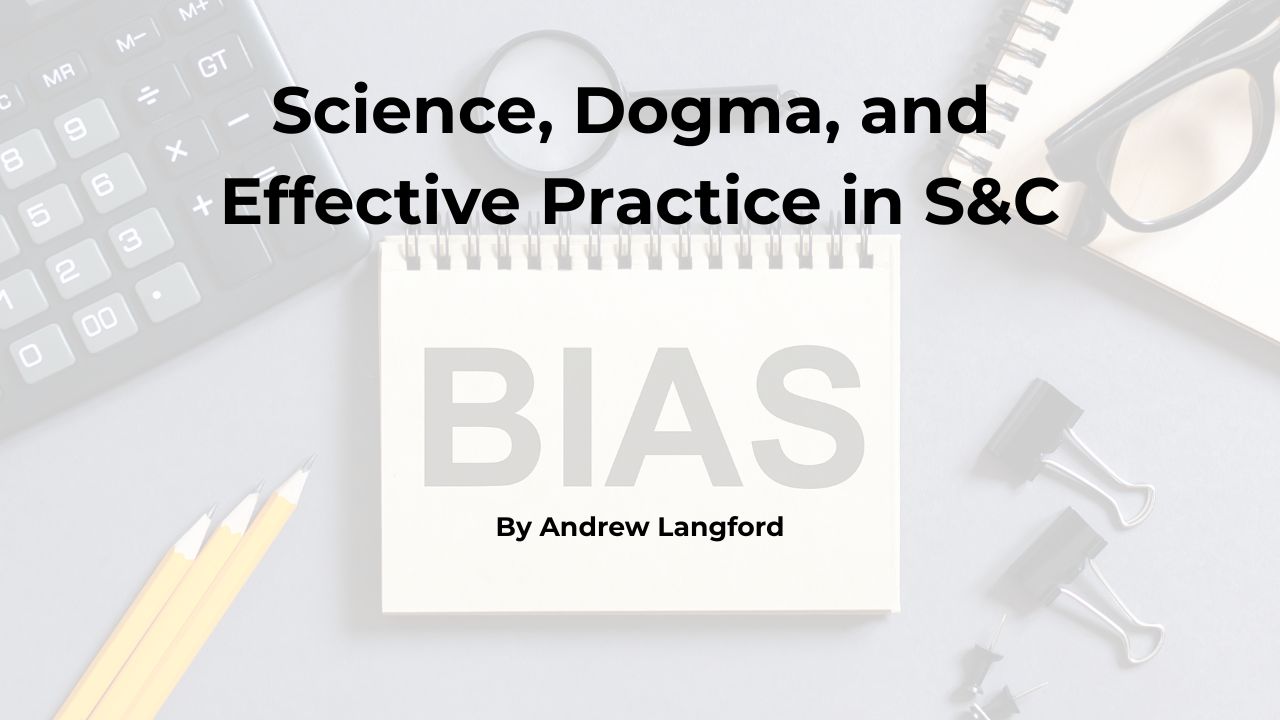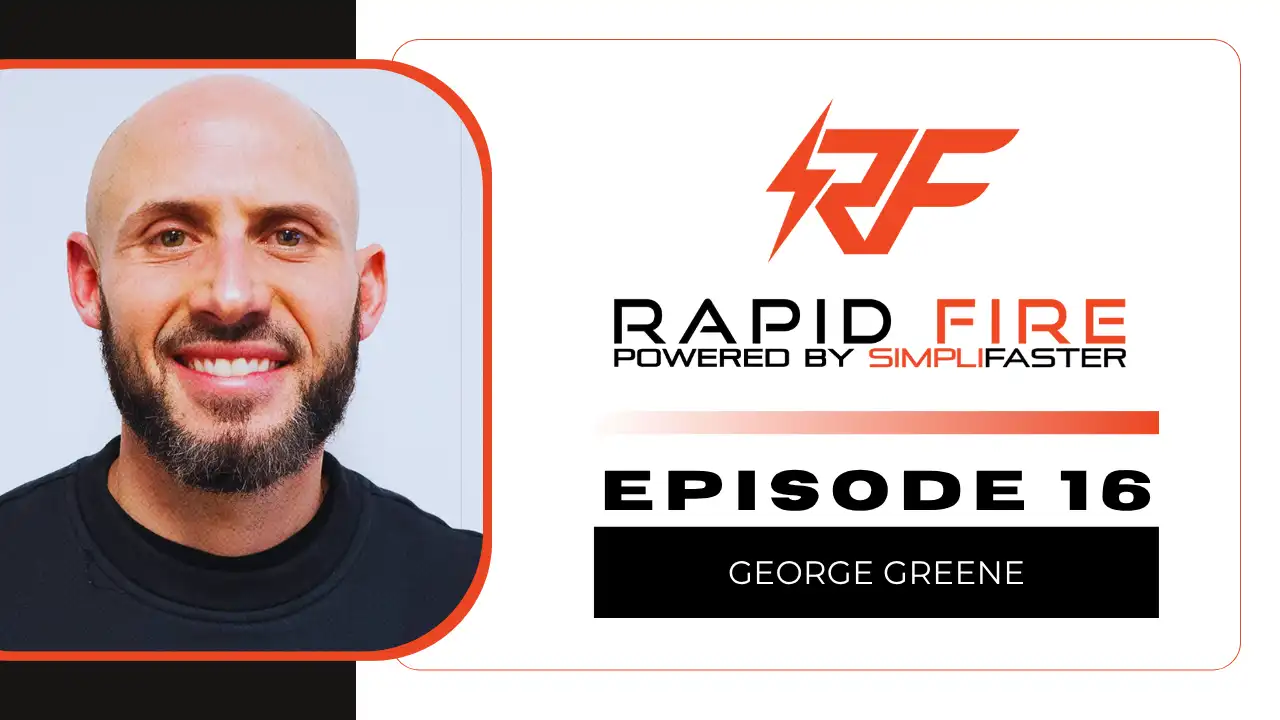How many of you have been in the weight room or online or at conference and heard the following?
“High reps build muscle”
“Lifting stunts growth”
“Too much protein is dangerous for your Kidneys”
Science has debunked these myths, yet somehow, they stick. Why? Because they sound logical, and they spread fast. Parents, athletes, and even fellow coaches repeat them without checking the science.
I’ve had enough and today I’m going to bust six myths that I hear each week from my group of athletes. Each one is a different flavour of oversimplification:
- Hamstring Function: Why they’re not just “knee vs. hip.”
- Rep Ranges for Growth: Why any load can work if you push close to failure.
- Muscle Damage: Why tearing fibres isn’t the secret to putting on size.
- Plyometrics: Why not every jump qualifies, and what makes a plyo a plyo.
- Exercise Swaps: Why loaded jumps don’t fully replace Olympic lifts.
- Creatine Fears: Why this supplement is safe, effective, and often misunderstood.
1. Hamstring Function: Why They’re Not Just “Knee vs. Hip”
You may write your programs by checking off big movement categories such as lower‑body push and pull, upper‑body vertical, and horizontal push and pull, then tossing in some unilateral work, carries, and core exercises.
That framework is fine for casual lifters who want a bit of structure—coaches may even dive a little deeper and add in some shoulder rotator cuff drills, hip abductors and adductors work, and…label their hamstring exercises as either “knee‑dominant” or “hip‑dominant.” Although well intentioned, this label oversimplifies the complexity of human movement…and now my athletes are echoing this. Some coaches assume that “knee‑dominant” hamstring exercises load only the knee joint, but because the hamstrings are bi‑articular, in that they cross both the hip and knee joints, you can’t “switch off” one end of the hammies. Research shows that hamstring function is more complex than simply knee flexion or hip extension.
Bourne et al1 found that both hip-extension (45-degree hyper-extension) and knee-flexion (Nordic hamstring exercise) movements activate all regions of the hamstring group. The two exercises, however, differ in the relative amount of activation across muscles, with hip extension resulting in greater hypertrophy in the biceps femoris long head and semimembranosus, and the Nordic hamstring exercise resulting in greater hypertrophy of the semitendinosus and the short head of biceps femoris. This tells us that exercise selection can emphasize—but not exclusively target—specific hamstring muscles.
Rather than being Team Nordic (knee dominant) or Team RDL (hip dominant), you should choose your hamstring exercises based on the muscle and adaptation you’re after, says @jonobward. Share on XBuilding on this, a study by Maeo et al2 examined hamstring hypertrophy and found that lengthened state eccentric training (LSET), performed using a leg curl machine, resulted in greater hamstring hypertrophy than the Nordic hamstring training (NHT). Specifically, performing leg curls led to a 1.7-fold greater overall hamstring volume increase compared to NHT, with 3.5-fold larger hypertrophy of the biceps femoris long head and 9.7-fold greater hypertrophy of the semimembranosus. In contrast, NHT produced greater growth in the biceps femoris short head and sartorius.
These findings are important, as the biceps femoris long head is the most common site of hamstring strain injury, and the research suggests that using exercises that target the biceps femoris long head, in addition to its aponeurosis, may serve to reduce the risk against hamstring injuries.
Finally, the 2024 paper by Lazarczuk et al3 compared the effects of 10 weeks of Nordic Hamstring Exercise (NHE) and the 45-degree hyper-extension (HE) exercise on hamstring muscle and tendon adaptations. Both exercises saw significant increases in hamstring muscle size. The Nordic saw greater hypertrophy of the semitendinosus, whereas the 45-degree hyper-extension saw greater hypertrophy of the biceps femoris long head.
So, rather than being Team Nordic (knee dominant) or Team RDL (hip dominant), you should choose your hamstring exercises based on the muscle and adaptation you’re after. Good programming should look to improve performance and minimise injury risk with a blend of exercises.
2. Rep Ranges for Growth: Why Any Load can Work if You Push Close to Failure
Contrary to the traditional view that moderate-to-high repetitions are required for hypertrophy, recent evidence shows that muscle growth can be achieved across a wide spectrum of loading ranges (5-30 reps), provided sets are taken close to failure.
Schoenfeld et al4 stated that low-load training (<60% 1RM) can induce similar hypertrophic outcomes compared to high-load training (>60% 1RM) if the level of effort is high. Their meta-analysis found trivial differences in muscle growth between heavy and light loads (effect size = 0.03), with results consistent across both upper and lower body muscles. These findings dismantle the myth of a strict “hypertrophy zone” and instead support the concept that a variety of loading schemes, ranging from heavy to light, can effectively stimulate muscle hypertrophy.
Contrary to the traditional view that moderate-to-high reps are required for hypertrophy, evidence shows that muscle growth can be achieved across a wide spectrum of loading ranges IF sets are taken close to failure, says @jonobward. Share on XWhat does this look like in practice? During the preseason period, as you look to build muscle capacity, you may target moderate to higher rep ranges (8-15). Then, as the season gets longer, you may look to dial back and work in the lower-to-moderate rep range (5-8) to reduce the total volume, but still work closer to failure. Two notes though:
- Working 3 sets of 8 to failure can still put you in a hole, so be smart on when you look to push and when you look to dial back.
- I would never recommend sets of 5 for isolation exercises, or where technique is compromised with heavy loads. E.g. Lateral Raises, Calf Raises, use some common sense still!
3. Muscle Damage: Why Tearing Fibres Isn’t the Secret to Putting on Size
A common belief that was spread from “meatheads” is that muscle growth occurs by first causing significant damage or “tearing” muscle fibres during training. Science, however, tells us that this is not the case.5 Instead, muscle growth is primarily a result of increased synthesis and accumulation of new proteins and organelles within the muscle fibres. This process is influenced by mechanical loading (such as resistance training), nutrition, hormones (particularly IGF-1 and insulin), and energy status.
At the core of muscle hypertrophy is the activation of a pathway known as PI3K-AKT-mTOR. This pathway promotes muscle growth by increasing the rate of protein synthesis. This is not just about building proteins but also involves regulating their turnover, meaning the continuous balance between the synthesis of new proteins and the removal of older proteins. Resistance training stimulates muscle growth by tipping this balance positively toward synthesis, not through causing substantial structural damage.
Believing that you must “tear” fibres can push athletes towards chronic training, and even injury—both of which impair long‑term progress. Shifting the mindset toward smarter programming, nutrition, and recovery can help improve “gains” whilst minimising risk.
Believing that you must *tear* fibres can push athletes towards chronic training, and even injury—both of which impair long‑term progress, says @jonobward. Share on X4. Plyometrics: Why Not Every Jump Qualifies (What Makes a Plyo a Plyo?)
While a number of plyometric exercises involve jumping, not every jump is plyometric. The term “plyometric” specifically describes movements that use the stretch-shortening cycle, which start via a rapid eccentric action immediately followed by a rapid concentric contraction, with ground contact time (GCT) < 0.250 milliseconds.
As seen in the video below, pogo jumps are one of the most popular plyometrics and are performed with minimal ground contact time.
Video 1. Pogo jumps with a focus on quick ground contacts.
What separates plyometric exercises from other types of jumps is the amortization phase, or the quick transition from eccentric to concentric muscle action. The shorter this transition phase, the more stored elastic energy and stretch reflexes contribute to muscular power.6 Conversely, jumps with a longer ground contact—or without the preceding rapid eccentric stretch—are not plyometric and do not result in the same neuromuscular adaptations7 that occur after performing plyometrics.
What separates plyometric exercises from other types of jumps is the amortization phase, or the quick transition from eccentric to concentric muscle action, says @jonobward. Share on XAs a coach, a general rule of thumb I tell my athletes is that any time you’re trying to get off the floor like it is lava, that is plyometric.
Video 2. A box jump—one of the most mislabelled plyometric exercises. There is no preceding rapid ground contact before jumping; therefore, it is not a plyometric!
Video 3. A box-to-box depth jump. Whilst there is a landing followed by a jump, the extended ground contact time (>0.250ms) means this is not plyometric. The goal of a depth jump is to land, absorb the jump with flexed hips, knees, and ankles, and then jump. The focus is purely on height, not the ground contact.
Video 4. A mini hurdle to box jump. As the focus here is on quick ground contact time (<0.250ms), this IS a plyometric jump. There is minimal flexion of the hips, knees, and ankles, and the intention is to jump as high as possible whilst spending the smallest amount of time on the ground.
Diving a bit deeper into the adaptations, plyometrics result in mechanical and neural improvements. Mechanically, the movements increase muscle-tendon stiffness and optimise the storage and release of elastic energy. Neurologically, plyometrics improve muscle coordination and timing through better recruitment of muscle fibres, faster activation of muscle spindles, and inhibition of protective mechanisms like the Golgi tendon organ reflex, which allows athletes to generate more force more quickly6. Jumps that are not plyometric in nature, on the other hand, generally develop muscular strength.
5. Exercise Swaps: Why Loaded Jumps Don’t Fully Replace Olympic Lifts
While loaded jumps, such as trap bar jumps, have gained popularity due to being easier to teach and learn, coaches need to understand they aren’t a direct replacement for Olympic lifts. While light trap bar jumps allow athletes to generate high amounts of peak power (with minimal coaching), they fall short of the Olympic lifts when it comes to rate of force development (RFD), as higher amounts of RFD are required to accelerate heavier loads.
Video 5. Rugby athlete performs trap bar jumps in performance training.
Video 6. Power clean performed from 15cm blocks.
Trap bar jumps allow athletes to achieve higher peak power outputs due to their simple, easy-to-learn movement pattern, which allows athletes to produce greater power outputs than Olympic lifts 8.9. So, if maximal power is what you are after, using trap bar jumps loaded to 10-20% of the athletes’ RM should be in your programs. But, Olympic lifts should also have a place in your program, as they are superior for developing your RFD. This is largely because Olympic lifts involve heavier loads and a shorter range of motion, which forces athletes to apply force more quickly and aggressively.
That’s why loaded jumps shouldn’t be seen as a straight swap for Olympic lifts. Both have their place!
While light trap bar jumps allow athletes to generate high amounts of peak power (with minimal coaching), they fall short of the Olympic lifts when it comes to rate of force development, says @jonobward. Share on X6. Creatine Fears: Why This Supplement Is Safe, Effective, and Often Misunderstood
Despite widespread misconceptions, the science tells us that creatine supplementation is safe, effective, and beneficial. A position stand by the International Society of Sports Nutrition (ISSN) concluded that creatine monohydrate supplementation has no detrimental health effects when used correctly and has significant performance and health benefits across young athletes, adults, and elderly individuals10.
A common concern is that creatine might damage your kidneys because it raises blood creatinine levels (a common marker for renal function); long‑term studies on healthy individuals, however, show no adverse effects on kidney or liver health.
Another misconception is that creatine causes dehydration and muscle cramps by pulling water into muscle cells. Whilst creatine does pull water into muscle cells, research shows that as long as you maintain normal fluid intake, creatine does not increase your risk of cramping or systemic dehydration.
Finally, the most spoken about side effect of creatine—and a true one at that—is the initial weight gain. This is due to water being drawn into muscle, and whilst not dangerous, if you are in a sport where weight is an important factor, you may have to consider your use of creatine.
Okay…so why would you want to take this magic white powder? I’ll tell you why, and the benefits are many!
- Increasing intramuscular phosphocreatine (PCr) stores can help boost single and repeat sprint ability as well as work output by ~10–20%.
- Improved strength and hypertrophy—PCr allows more total work in training, leading to larger gains in muscle mass and strength!
- Better recovery, as PCr helps post‑exercise glycogen resynthesis, attenuates rises in muscle damage markers (CK, LDH), and reduces inflammation.
- PCr can help thermoregulation and hydration thanks to an intracellular fluid shift, improving tolerance to exercise in the heat.
- PCr can help in spinal‑cord and concussion recovery due to improved cellular bioenergetics. There is research showing a neuroprotection effect, with data suggesting creatine can limit brain and spinal injury severity by stabilising mitochondrial energy metabolism.
- Finally, there is research examining how PCr can prolong and improve quality of life. There are promising signs when it comes to supplementing PCr to combat neurodegenerative diseases, diabetes (improving glycemic control), osteoarthritis, fibromyalgia, sarcopenia, cognitive decline, and even as a potential adjunct during pregnancy to protect against birth asphyxia.
Okay, so if you are not convinced of the benefits now, I’m not sure you ever will be! But if you are keen to start scooping creatine into your shaker, what are the guidelines?
The International Society of Sports Nutrition says healthy adults can start a weeklong loading phase may of approximately 0.3 g/kg body weight per day. So, for an 80kg adult (175lbs) you can split this into four equal servings of 6 grams. After that, you can go into a “maintenance” dosing phase of 3-5 grams per day. An alternative method of 3 grams over four weeks will have the same effect, but without the weight gain sometimes seen with rapid loading!
You can choose whatever liquid beverage you wish to mix this into—or, as my players do, scoop directly into your mouth and chase this down with a quick gulp of water.
Be Willing to Dig Deeper
I decided to write this article in order to call out those catchy myths that slip into gym chat, like “high reps only” or “just do Nordics.” I hope now I’ve convinced you to swap out these myths with real science:
- Choose hamstring drills based on the adaptations you want.
- Understand that you can use any rep range to grow muscle.
- Understand that proper programming, nutrition, and recovery are key to building muscle.
- Be selective when choosing what jumps to program (and why).
- Keep both loaded jumps and Olympic lifts in your program.
- Leverage creatine to improve your performance.
Whilst there is a time and place to be a meathead and do curls in front of the mirror, let research be the backbone of your training program and deliver you results.
References
- Bourne MN, Duhig SJ, Timmins RG, et al Impact of the Nordic hamstring and hip extension exercises on hamstring architecture and morphology: implications for injury prevention British Journal of Sports Medicine 2017;51:469-477.
- Maeo, Sumiaki; Balshaw, Thomas G.; Nin, Darren Z.; McDermott, Emmet J.; Osborne, Thomas; Cooper, Naomi B.; Massey, Garry J.; Kong, Pui W.; Pain, Matthew T. G.; Folland, Jonathan P. Hamstrings Hypertrophy Is Specific to the Training Exercise: Nordic Hamstring versus Lengthened State Eccentric Training. Medicine & Science in Sports & Exercise 56(10): p 1893-1905, October 2024. | DOI: 10.1249/MSS.0000000000003490
- Lazarczuk, S. L., Collings, T. J., Hams, A. H., Timmins, R. G., Shield, A. J., Barrett, R. S., & Bourne, M. N. (2024). Hamstring muscle–tendon geometric adaptations to resistance training using the hip extension and Nordic hamstring exercises. Scandinavian Journal of Medicine & Science in Sports, 34(9), e14728.
- Schoenfeld BJ, Grgic J, Van Every DW, Plotkin DL. Loading Recommendations for Muscle Strength, Hypertrophy, and Local Endurance: A Re-Examination of the Repetition Continuum. Sports (Basel). 2021 Feb 22;9(2):32. doi: 10.3390/sports9020032. PMID: 33671664; PMCID: PMC7927075.
- Sartori, R., Romanello, V. & Sandri, M. Mechanisms of muscle atrophy and hypertrophy: implications in health and disease. Nat Commun 12, 330 (2021).
- Davies G, Riemann BL, Manske R. Current Concepts of Plyometric Exercise. Int J Sports Phys Ther. 2015 Nov;10(6):760-86. PMID: 26618058; PMCID: PMC4637913.
- Kons, R.L., Orssatto, L.B.R., Ache-Dias, J. et al. Effects of Plyometric Training on Physical Performance: An Umbrella Review. Sports Med – Open 9, 4 (2023).
- Turner TS, Tobin DP, Delahunt E. Optimal loading range for the development of peak power output in the hexagonal barbell jump squat. J Strength Cond Res. 2015 Jun;29(6):1627-32. doi: 10.1519/JSC.0000000000000802. PMID: 25486301.
- Turner, T. (2022, March 29). Trap bar jumps vs. Olympic lifts: Let’s end the debate. Sportsmith.
- Kreider, R.B., Kalman, D.S., Antonio, J. et al. International Society of Sports Nutrition position stand: safety and efficacy of creatine supplementation in exercise, sport, and medicine. J Int Soc Sports Nutr 14, 18 (2017). https://doi.org/10.1186/s12970-017-0173-z





